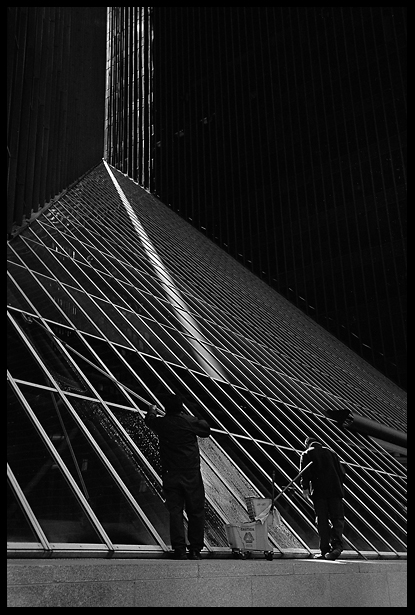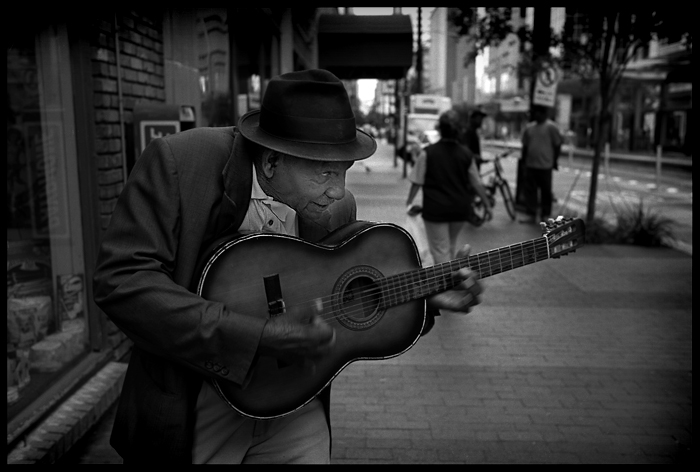Turtle
Veteran
X-ray, I agree, but you might still wish to take cover 😀
X-ray, I agree, but you might still wish to take cover 😀
Let them believe what they want. Whatever makes them feel good.
X-Ray,
I think I might quote you on the bottom of all my future posts !
Pretty much sums up how I feel too ! (on more than just the subject of lens rendition).
BTW see that you live in Tennessee? I'm just to the south in N. AL.
Maybe it's a "livin' in the south thang" but suspect it's more of a old guy thing 🙂
For those that think I'm full of S#%T then take a moment and think about this. If you're not in total control of your process, printing and film development, and and you can't repeat exactly the same result day after day then the results you are getting are purely accidental. If you can't repeat the same result every time then how do you know of the lens is flat or the process is flat or the lens is contrasty or the film is contrasty. The lack of consistency influences the final result. Can you make one print per day exactly like the print you made a year ago? Put your camera on a tripod and shoot 36 exposures of the same subject at exactly the same exposure. Clip six inches of film each day and run it over a period of a month until all is processed. Compare your results side by side and then with a densitometer. Most likely you'll be al over the place in contrast. Are your results accidental whether good or bad and can you repeat them? You have to eliminate the variables before coming to a conclusion otherwise you're conclusions aren't valid.
You brought up a good point here. I agree many of the RFF's are shooting c41 B&W film and taking it to Costco, Walmart or some other amateur lab with little to no QC and people who couldn't care less and have no knowledge or drive to keep a process in control. Scanning is another issue too vs silver gelatin printing. To my knowledge none of the current traditional process B&W films were designed for direct scanning but rather to wet print in a darkroom. How many people or labs scanning negs do anything other than use the canned generic profiles if any profile at all? How many people really know anything about scanning negs other than feeding them in and saving the image. Every film has a different profile / scanner curve / profile set and every scanner is different. Scanning is different on a drum vs a low end flatbed (under $8,000) vs a high end dedicated scanner like the Imacon (over $10,000). You're not going to get the same results from a $800 scanner vs a $$30,000 scanner and just sticking negs in and expecting results to pop out is no more realistic than than expecting your camera to make you a great photographer. It up to the person running the equipment to make it deliver the goods.
I don't know the percentages are but I would guess a large percentage here are doing the Walmart type lab process / scan deal. I would also venture to say the ones running film themselves scan direct on inexpensive scanners with canned generic profiles and the remaining number who run their own film and wet print really only go through the motions without a real understanding of the process. How many of you who wet print ever pull your print from the developer early if it looks like it's coming up too fast and getting too dark? Do you try to force a print if it's too light? Are you tempted to use old developer, outdated film or paper. Is your safe light really safe? Do you know how to test your safelight and paper? Do you settle on one film developer combo or do you skip around and never settle on anything? How many of you can really get everything out of a neg that's in the neg? Dodge, burn, bleach, tone, ever do that? It takes more than putting your film in a can of chemical and shaking it around to be a good lab man and more than sticking a piece of paper under an enlarger to be a good printer. How many here that run their own film ever tweak the process or know the relationship between development, exposure, contrast and density?
I've run my film since I was 9 years old and printed it as well. That makes almost 52 years as a printer. It's more than time doing it, it's understanding what I'm doing and developing a refined technique. When you think about this what's the point in owning great equipment if you let Walmart or the drug store run/ ruin your film and you don't understand how this effects the final result.







I have owned and used both the v4 and the asph; the asph is the best 35/2 lens made. Love the contrast, the tonal range, the bokeh, even the sharpness 🙂 Excellent all round lens, being nice and compact. But to each his own.
Here's one from earlier this week:>

Extraordinarily WONDERFUL Todd...Love It !!!A well built, compact performer and my favorite Leica lens.
35/2 asph...




Todd
oh and I'm 21 years old, I don't print (although I have in the past), only develop my film myself and scan it in a cheap canoscan 8800f. does that mean that I don't know what I'm doing and have no idea what I'm talking about? that I can't judge a negative or lens?
I think I can, but what do I know.
but I do get results that are pleasing, not only to myself, and I know HOW to get, repeat and alter them.
Somewhat off topic, but I'll ask anyway... How does the 35 'cron asph compare to the current 50 'cron in terms of sharpness and contrast, in particular at f/2 and f/2.8? I have the 35 'cron IV and the 50 'cron and there's no denying that the 50 is sharper and more contrasty than the 35 at wide apertures. Would the 35 'cron asph be a better match to the 50 at wide apertures?
Cheers
Vincent
My friend had the 35 Cron ASPH and it was brutally sharp, drew with crisp edges and solid contrast. Scans and prints were incredible at any size. It blows away any 35 I've used from Canon (35L) or Nikon (2/35, 1.4/35). No contest, although the EF 35L is damn good. The only lens I know of that is in the same ballpark is the 35 Lux ASPH (I haven't tried the Biogon...). But I would hardly describe it as an ugly lens. It's more 'clinical' than the older 35's, but things like excessive contrast can be tamed in developing, printing or PS.
I have the 35 Lux ASPH and 35 Cron v04. The Cron v04 is very, very sharp down to about f2.8. F2 is a little weak. But don't be fooled by all the talk of romantic rendering. This is not a pasty lens by any means. According to Puts, after f2.8 or so it runs neck to neck with the ASPH.
BUT, it has a very different look. Much creamier and it blooms just ever so slightly around the highlights. I see more depth or three dimensionality in the v04 negs, even compared to the Lux ASPH. It's not a low contrast lens by any means and can produce some punch negs, but it has this low level scatter that sits on top of everything. Sort of like blond girls with peach fuzz. It catches the light and scatters, giving them a glow. I think it was Martine Frank who said that Marilyn had this sort of peach fuzz that made her skin glow.
I never really paid attention to the bokeh of the v04. Probably because I've never noticed anything annoying about it.
One nice thing about the v04 is that the transition from in focus to out of focus is more gradual, than with the 35 Cron ASPH, so it's a little more forgiving for scale focusing.
Overall I think the Cron v04 and a roll of properly developed Tri-X is hard to beat. The extra bit of glow, just makes the prints look more alive to my eyes.
I just wish the construction of the front element was less flimsy. Watch out with the small square hood. It locks in to place and if you're not careful, even when putting it in your bag, it can twist the front element loose. With the hood locked in to place, so it can't rotate, it effects a lot of leverage on the front ring.
My solution to the high contrast of the Cron ASPH or any lens with very high contrast? Use a divided developer like Barry Thornton's 2-bath and you'll see all the tonality you want. Or apply a little nose grease to the front element. Worked for Sternberg.

